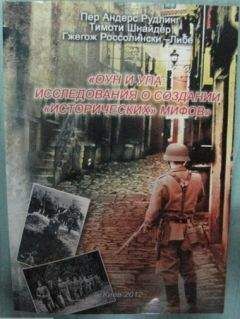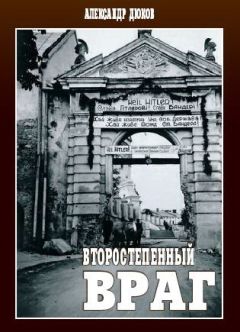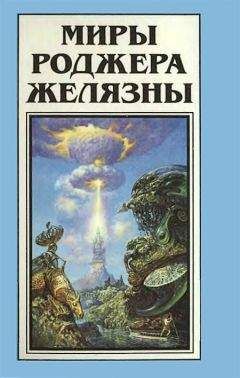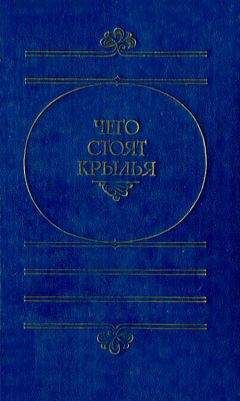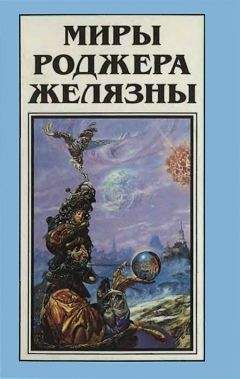227
In an interview, the 87-year-old Volhynian UPA veteran Ivan Hnatevych Kisliuk (b. 1923) presses the book Armiia bez Derzhavy, by the founder of the original UPA, into my hands, and told me to open to page 253. It reads: “In the end of July 1943 the General Staff of the UNRA issued an appeal to the Ukrainian people, in which it protested against all those measures, which were condemned as the disreputable acts of blinded totalitarians, and emphasized that the full responsibility for the crimes falls upon the leader of the OUN Bandera, Mr. Mykola Lebed’- Ruban.” “See, Ruban, Jew! [zhyd!],” Mr. Kisliuk said, pointing at Lebed’s Ashkenazi-sounding nom de guerre, which to him proved Jewish responsibility for the Volhyn massacres. Bul’ba-Borovets’, Armiia bez derzhavy, 253. Personal interview, Kyiv-Troishchina, Ukraine, September 23, 2010.
Weiner, Making Sense of War, 161–172.
V. R. Nakhmanovych, “Bukovyns’kyi Kurin’ i masovi rozsteli evreiv Kyiva voseni 1941 r.,” Ukrains’kyi istorychnyi zhurnal no. 3 (474), (May — June 2007): 90.
John-Paul Himka, “The Reception of the Holocaust.”
Himka, “War Criminality”; idem, “Central European Diaspora”; Glenn Sharfman, “The Quest for Justice: The Reaction of the Ukrainian-American Community to the John Demjanjuk Trials,” Journal of Genocide Research 2, no. 1 (2000): 65–87.
Petro J. Potichnyj was one of the few exceptions among the pronationalist scholars. He reached out to the Jewish community, aiming at a dialogue. Howard Aster and Peter Potichnyj, Jewish-Ukrainian Relations: Two Solitudes (Oakville, ON: Mosaic Press, 1983); idem, eds., Ukrainian-Jewish Relations in Historical Perspective (Edmonton: CIUS and University of Alberta, 1990).
Berkhoff and Carynnyk, “The Organization of Ukrainian Nationalists,” 149, 151, 152, citing Mykola Lebed’, “Orhanizatsiia protynimets’koho opouru OUN, 1941–1943 rokiv,” Suchasnist’, no. 1–2 (January — February 1983): 154.
Berkhoff and Carynnyk, “The Organization of Ukrainian Nationalists,” 151, citing Wolodymyr Kosyk, “Problems of the History of OUN and UPA,” Ukrainian Review 40 (Spring 1993): 26–27.
Petro J. Potichnyj, in Yevhen’ Shtendera and Petro J. Potichnyj, eds., Litopys UPA, vol. 17, English-Language Publications of the Ukranian Underground (Toronto: Litopys UPA, 1988), 140.
Taras Hunczak, “Between Two Leviathans: Ukraine during the Second World War,” in Bohdan Krawchenko, ed., Ukrainian Past, Ukrainian Present: Selected Papers from the Fourth World Congress for Soviet and East European Studies, Harrogate, 1990 (New York: St. Martin’s Press, 1993), 99.
Alexander Motyl, The Turn to the Right: The Ideological Origins and Development of Ukrainian Nationalism, 1919–1929 (New York: Columbia University Press, 1980), 166.
Alexander Motyl, “Ukraine, Europe, and Bandera,” Cicero Foundation Great Debate Paper, 10/05 (March 2010), 6: http://www.cicerofoundation.org/lectures/Alexander_J_Motyl_Ukraine_Europe_and_Bandera.pdf 6.
“It makes no sense to refer to Eastern Europeans, who were regarded by the Germans as subhumans, as ‘Nazi’ war criminals; they were not allowed to join the Nazi Party.” Myroslav Yurkevich, in “Discussion,” in Bozhyk, Ukraine in World War II, 158. Yet, National Socialism attracted many Eastern Europeans. In fact, Nazi Germany categorically banned any use of swastikas and other Nazi symbols in the émigré press, as well as prohibited the use of the term “National Socialist” in the names of any Slavic émigré organizations in Germany. Iury Hrybouski, “Belaruski rukh i Niamechchyna napiaredadni i u pachatku Druhoi sus’vetnai vainy,” ARCHE No. 5 (80), (May 2009): 152.
Hunczak, “Ukrainian-Jewish Relations,” 44–45. Similarly Mykola Riabchuk describes the OUN’s collaboration and anti-Semitism as “rather disputable” and relies on Motyl’s defi nition, in which collaborators are “individuals or groups who abandon their sovereign aspirations and serve another power’s goals.” Mykola Riabchuk, “Bandera’s Controversy and Ukraine’s Future,” citing Motyl, “Ukraine, Europe, and Bandera,” 6.
Daniel Ursprung, “Faschismus in Ostmittel-und Südosteuropa: Theorien, Ansätze, Fragestellungen,” in Der Einfl uss von Faschismus und Nationalsozialismus auf Minderheiten in Ostmittel- und Südosteuropa, ed. Mariana Hausleitner and Harald Roth (Munich: IKGS-Verlag, 2006), 22.
Alexander Motyl, “Is Putin’s Russia Fascist?” National Interest Online, December 3, 2007: http://nationalinterest.org/commentary/inside-track-is-putins-russia-fascist-1888.
Motyl, “Is Putin’s Russia Fascist?” and idem, “Surviving Russia’s Drift to Fascism,” Kyiv Post, January 17, 2008: http://www.kyivpost.com/opinion/oped/28182/ (both accessed January 15, 2011). Andreas Umland has taken Motyl to task over his use of this terminology. “If we would apply Motyl’s loose conceptualization of fascism to contemporary world history, we might fi nd so many ‘fascisms’ that the term would lose much of its heuristic and communicative value. Motyl’s comment is in so far unconstructive as he deprives researchers of Russian nationalism of an important analytic tool.” Andreas Umland, “Is Putin’s Russia Really “Fascist”? A Response to Alexander Motyl”: http://www.globalpolitician.com/print.asp?id=4341 (accessed January 15, 2011).
Motyl, “Ukraine, Europe, and Bandera,”14.
Wilfried Jilge, “Competition Among Victims? The Image of the Other in Post-Soviet Ukrainian Narratives on World War II,” in Heorhii Kas’ianov, ed., Obraz inshoho v susidnikh istoriakh: mifi, stereotypy, naukovi interpretatsii: Materialy mizhnarodnoi naukovi konferentsii, Kyiv, 15–16 hrudnia 2005 roku (Kyiv: NAN Ukrainy, Instytut istorii Ukrainy, 2008), 66.
This interpretation has found a receptive audience among some pro-OUN and UPA diaspora historians. See, for instance, Canadian Institute of Ukrainian Studies Director Zenon Kohut’s reply to John-Paul Himka “Re: Should Ukrainian Studies Defend the Heritage of OUN-UPA?” February 12, 2010. Dominique Arel’s Ukraine List, UKL 441 (Bandera-OUN and Famine Debates), February 16, 2010: http://www.ukrainianstudies.uottawa.ca/pdf/UKL441.pdf.
For instance, public intellectual Mykola Riabchuk sees no difficulty with the UPA cult, as long as the focus remains on their “ethical rather than ideological values” and as long as their ideology, ethnic cleansing or mass murders are not celebrated. “The UPA fi ghters. are praised fi rst of all for their patriotism and commitment to the national-liberation cause, for their idealism and dedication, for spiritual strength and self-secrifi ce.” Mykola Riabchuk, “Ukraine: Neither Heroes nor Villains: Review of Heroes and Villains: Creating National History in Contemporary Ukraine, by David Marples (Budapest: Central European Press, 2007),” Transitions Online, 6 February 2007.
See, for instance, the interview with Volodymyr V’’iatrovych, Masha Mishchenko, “Pratsivnyk SBU.”
See, for instance Peter J. Potichnyj and Yevhen Shtendera, eds., Political Thoughts of the Ukrainian Underground, 1943–1951 (Edmonton: CIUS and University of Alberta, 1986); Himka, “War Criminality,” 11. See Rudling, “Theory and Practice”; &ada, “Creative Forgetting;” Marples, Heroes and Villains, 298–301; Dietsch, Making Sense of Suffering, 147–176; Grzegorz Rossolinski-Liebe, “Der polnisch-ukrainische Historikerdiskurs über den polnisch-ukrainischen Konfl ikt, 1943–1947,” Jahrbücher für Geschichte Osteuropas 57, no. 1 (2009): 54–85.
Howard Aster, “Refl ections on the Work of Peter J. Potichnyj,” Journal of Ukrainian Studies 21, no. 1–2 (1996): 226–227. Potichnyj largely limits his focus to the period during which OUN and UPA took a more liberal and open position to national minorities. See, for instance, Potichnyj and Shtendera, Political Thoughts of the Ukrainian Underground, a collection of essays partly based upon Mykola Lebed’s archives. Unsurprisingly, there is next to nothing in the Litopys UPA on the topic of the Volhynian massacres in 1943, and total silence on UPA murders of Jews.
Andreas Umland, “Die andere Anomalie der Ukraine: ein Parlament ohne rechtsradikale Fraktionen,” Ukraine-Analysen, no. 41 (2008): 7–10. Émigré nationalists who reestablished contacts in Ukraine, used to clandestine work, were often disappointed the organization and nature of the nationalists in the old country. See, for instance, Sukhovers’kyi, Moi Spohady, 237.
For examples of this narrative, see Petro Sodol, “Foreigners in the UPA,” Ukrainian Quarterly 58, no. 4 (2002): 342–348; Volodymyr Kosyk, “Organizational Conditions and the Initial Struggle of the Ukrainian Insurgent Army (UPA),” Ukrainian Quarterly 58, no. 4 (2002): 310–325; Volodymyr Viatrovych, [V’’iatrovych] “The Communist Alliance against the Ukrainian Insurgent Army (UPA),” Ukrainian Quarterly 58, no. 4 (2002): 326–341; Herbert Romerstein, “The KGB Disinformation Campaign Against Ukrainians and Jews,” Ukrainian Quarterly 58, no. 4 (2002): 349–360.
Serhiichuk, Nasha krov — na svoii zemli, 3, 42, 77.
Vasyl’ Derevins’kyi, Stavlennia OUN(b) i UPA do susidnikh narodiv ta natsional’nykh menshyn (Kyiv: Natsional’na Akademiia nauk Ukrainy, Instytut istorii Ukrainy, 2006), 44.
Serhii Hrabovs’kyi, “Tak proty koho zh voiuvav Shukhevych u Bilorusi?” Ukrains’ka Pravda: http://www.pravda.com.ua/news/2007/11/13/66774.htm (accessed November 18, 2007). On Hrabovs’kyi’s celebration of OUN-UPA and Waffen-SS division Galizien, see Marples, Heroes and Villains, 231–232.
Hunczak, “Problems of Historiograhy,” 136.
Morton Weinfeld, Like Everyone Else. but Different: The Paradoxical Success of Canadian Jews (Toronto: McClelland & Stewart, 2001), 213–214; Daniel Mendelsohn, Lost — A Search for Six of Six Million (London: HarperCollins, 2007), 99; Golczewski, “Shades of Grey,” 114–155.
See, for example, Himka, “The Ukrainian Insurgent Army and the Holocaust,” 15, citing the USC Shoah Foundation Institute for Visual History and Education, 20586 Jack Glotzer, 12–15; Spector, The Holocaust of Volhynian Jews, 358; Ahron Weiss, “Jewish-Ukrainian Relations in Western Ukraine During the Holocaust,” in Peter J. Potichnyj and Howard Aster, eds., Ukrainian-Jewish Relations in Historical Perspective (Edmonton: CIUS and University of Alberta, 1990), 409–420; Weiner, Making Sense of War, 270–271.
See Mykola Lebed, UPA: Ukrains’ka Povstans’ka Armiia (n.p. 1946), 35–36; for other early claims on Jews in UPA, see Petro Mirchuk, Ukrains’ka Povstans’ka Armiia,1942–1952 (Munich: Cicero,1953),69–72.
Lebed’, Ukrains’ka Povstans’ka Armiia, 35–36, cited in Friedman, “Ukrainian-Jewish Relations,” 204.
Leo Heiman, “We Fought For Ukraine — the Story of Jews Within the UPA,” Ukrainian Quarterly, vol. 20, no. 2 (Spring 1964):33–44.
Dr. Stella Krentsbakh, “Zhyvu shche zavdiaky UPA,” in Petro Mirchuk and V. Davydenko, eds., V riadakh UPA: Zbirka spomyniv buv. Voiakiv Ukrains’koi Povstans’koi Armii (New York: Nakladom T-va b. Voiakiv UPA v ZDA i Kanadi, 1957), 342–349.
“The questionable source mentioned here is the ‘memoir,’ allegedly by a Jewish woman named Stella Kreutzbach, in Nasha Meta, Toronto 27 and December 4, 1954; Ukrainske Slovo (Buenos Aires), October 10, 1954; Kalendar Almanakh na 1957 Rik (Calendar Almanac for 1957) (Buenos Aires): 92–97. Kalendar also features an article by Dmitry Andreyewsky (pp. 88–91), in which he states that Stella Kreutzbach went to Palestine after the war, where she was later employed as a secretary in the foreign ministry, and that several weeks after the publication of her memoirs in the Washington Post (which the Ukrainian publication credited for fi rst releasing the memoirs) she was mysteriously shot and killed. I checked the Washington Post of that period and did not fi nd the memoirs. At my request, Dr. N. M. Gelber of Jerusalem made inquiry in the foreign ministry there; the reply was that the ministry had never had an employee by that name and that such a case of homicide was entirely unknown. Moreover, a careful analysis of the text of the ‘memoirs’ has led me to the conclusion that the entire story is a hoax. Similarly, the Ukrainian writer B. Kordiuk labels the story ‘a mystifi cation’; he states that ‘none of the members of the UPA’ known to him ‘ever met or heard of her.’” Philip Friedman, Roads to Extinction: Essays on the Holocaust, ed. Ada June Friedman, introduction by Salo Wittmeyer Baron (New York: Conference on Jewish Social Studies, Jewish Publication Society of America, 1980), 203–204.
The Krentsbakh/Kreutzbach forgery was also discussed in the Ukrainian émigré press, where the writer Bohdan Kordiuk concorded with Friedman’s conclusions: “The careful historian Friedman give the story of Dr. Stella Krentsbakh, who ‘Thanks UPA for her Life,’ which has been re-printed so many times, his attention, but fi nds nothing about her. And rightly so, since none of the UPA veterans, known by the author of these lines, either heard or knew of this legendary Stella Krentsbakh. Neither have any Jews heard of her. Hardly any one of the tens of thousands of Ukrainians refugees claim to have met this Stella Krentsbakh. The biography, attributed to her in certain places, does not hold up to critical scrutiny; claims that she would have been working in the Ministry of Foreign Affairs do not correspond to the truth. And some were nonsensical claims — that she would have been killed on the streets of Jerusalem from a shot to the nape of her neck, supposedly due to her favorable memories of the UPA. That nonsense constitutes a jungle of the prejudices which so burden Ukrainian-Jewish relations. It seems to us, that as long as there is still no independent evidence, the stories of Dr. Stella Krentsbakh need to be regarded as a mystifi cation.” Bohdan Kordiuk, “Retsenzii: Pro liudei, spovnennykh samoposviaty: Their Brother’s Keepers by Philip Friedman. With a Foreword by Father John A. O’Brien. Crown Publishers, Inc. New York, 1957, pp. 224,” Suchasna Ukraina (Munich) 15 (194), July 20, (1958): 7.
